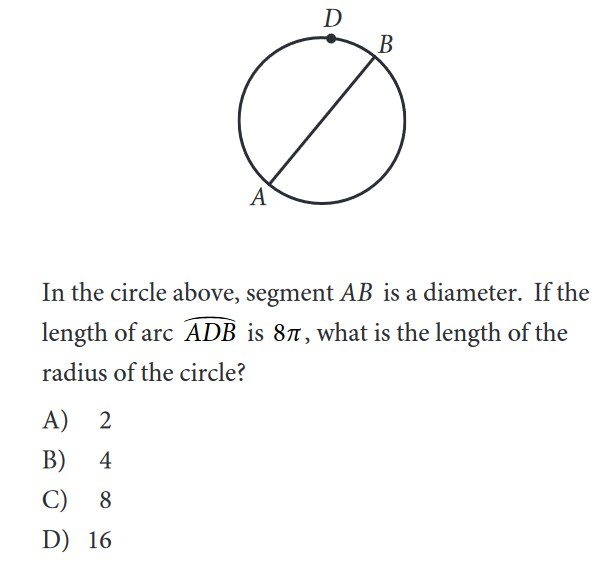5 Common SAT Math Mistakes to Avoid

The SAT has changed significantly over the past few decades, with their most recent overhaul of the test design just a few years ago in 2016. For some parents, you may not have ever taken the SAT or even needed to; for others, the SAT that you took when you graduated high school is a very different beast from what high school students take now. Either way, the best way to approach the SAT is to keep an open, unbiased mind as you prepare your student to take it.
If you’re a parent hoping to help your student do well on the SAT, then you may want to review what the SAT Math section is and the common mistakes that students often make when preparing for and taking the test. Even if math wasn’t your academic strength, you can help your student feel more confident on test day by following some of CollegeVine’s top advice!
What is the SAT Math Section?
The SAT is divided into two sections: the Evidence-Based Reading and Writing (or EBRW) section and the Math Section. As the name implies, the Math section tests students on mathematical concepts and skills that they’ve acquired throughout all their years of school, with a particular emphasis on those topics and skills learned in high school.
The SAT Math is divided into two subsections, a no-calculator-allowed section and a calculator-allowed section. In total, the Math test gives students 80 minutes to complete 58 questions.
- The no-calculator portion gives students 25 minutes for 20 questions.
- The calculator portion gives students 55 minutes for 38 questions.
The SAT categorizes math questions into one of four categories, and they have a consistent number of questions in each category per test:
- Heart of Algebra (19 questions): These questions involve linear equations and inequalities, systems of linear equations/inequalities, and their graphs.
- Problem Solving and Data Analysis (17 questions): These questions involve ratios, proportions, percentages, graphs and charts, statistics, and probability.
- Passport to Advanced Math (16 questions): These questions involve quadratic and nonlinear equations like exponential equations and their graphs.
- Additional Topics in Math (6 questions): These questions involve geometry and trigonometry.
SAT Math Mistakes to Avoid
In order to do well on the Math section of the SAT, it’s important for students to spend time getting familiar with the test format by completing practice tests and taking rigorous math classes in high school. That said, many students don’t spend nearly enough time preparing against common errors that go beyond carrying a negative sign. Here are some common Math mistakes, and how to help your teen avoid them.
1. Over-Relying on a Calculator
Although the SAT has an explicit no-calculator-allowed section, some students have gotten accustomed to using their calculator as a crutch on the calculator-allowed section. While it’s true that some problems on the calculator-allowed section can be solved quickly using a calculator, it’s also true that most problems can be solved without one, and sometimes solving them by hand is faster.
Here’s a sample problem from one of the official SAT Practice Tests to show how over-relying on your calculator can be problematic:
Students who over-rely on their calculator might be tempted to multiply 8 by 22/7 or by 3.14, and then try to solve. However, it’s much faster to use old-fashioned pencil-and-paper and solve this problem step-by-step using circle formulas:
- Based on the information in the problem, we can conclude that the circumference, or the distance around the circle, is 16π since it is double the length of arc ADB.
- The formula for the circumference of a circle is 2πr.
- Setting 16π equal to 2πr, we can solve for r as a variable. Divide both sides by 2π and we get r equals 8, which is the answer.
Tip: When your student is practicing for the SAT, encourage them to use the calculator as a last resort, or to use it only when a calculation would truly be faster than not using it, such as when multiplying or dividing numbers with decimals. The more comfortable they are with manipulating equations and variables on their own, the more confident they will feel on test day.
2. Forgetting Formulas
Your student was likely already taught many of the formulas they’ll need to do well on the SAT, but that doesn’t mean that they’ll always remember them. It could have been a few years since they’ve had to use that formula, and the SAT won’t necessarily specify which formula to use to solve a given problem. We’ve rounded up 30 SAT Math Formulas You Need to Know for students to review and familiarize themselves with.
Tip: While relearning formulas is valuable, it’s more important that students practice using them on real questions. You can use the free practice resources that College Board provides to help your student work through questions that use a specific set of formulas. Over time, your student will start to identify when they need to use a formula just by reading the question.
During this time, it’s important to leave the time pressure off. So many students try to apply new concepts and adhere to a time limit. Speed comes naturally when they’ve mastered the concepts, so if you’re using College Board’s resources, encourage students to work through the questions at their own pace first before attempting timed practice.
[amp-cta id='9353']
3. Not Writing Steps Down
This is more common for students who are already confident in their math skills or those who have taken very advanced math courses in high school like Calculus. It also happens when students are trying to get faster at solving problems so they can complete all the questions in the alloted time.
The problem with this practice is that not writing your steps down is a gamble: sometimes students won’t make any mistakes with their mental math, and this leads students to think they can get away with it all the time. But we know that when students don’t write their steps down, they’re more likely to forget little things like carrying negatives or flipping inequality signs when they need to, and the College Board is sure to include the result of a careless mistake as one of the answer choices on the exam.
Tip: When your student begins preparing for the SAT, encourage them to first work through the problems at their own pace, writing all of their steps down. Then have them review their practice section—are there any particular types of questions that they tend miss often? Your student needs to be able to identify these question types on the exam so that they can slow down on them when it comes to the official test day. Leave the mental math and shortcuts for easier problems.
4. Misreading the Question
Many SAT math questions are word problems, and some students have a hard time “translating” word problems into math. When a student misreads a problem on test day, though, they will probably not be able to interpret it correctly and may end up solving for the wrong value.
Tip: Get your student used to identifying what to solve for just by reading the question, even if they don’t actually know how to solve it yet. You may also want to get them used to translating common phrases into math. College Board is very careful with the language of math questions, so these phrases indicate some of the common symbols:
- Is, are, was, were, will, results in, gives, yields: =
- Sum, increased by, more than, together, combined, total: +
- Difference, decreased by, less/fewer than, younger/shorter than: –
- Multiplied by, of, product of, twice: X
- Divided by, per, out of, ratio of: ÷
Here’s an example from a College Board practice test:
From the above, we see the phrase “10 more than 14”, but we now know that this is just “10 + 14” or 24. Now we can easily solve the algebra equation 16 + 4x = 24 to find the value of x, which is 2, and multiply that by 8 to get 16.
5. Solving the Questions in the Order They Appear
This is my personal favorite strategy to teach students, and can often correct other time-management related issues when it comes to the SAT math. Our natural tendency, on any test, is to solve the questions in the exact order that they appear. However, students should generally try to answer questions in order from easiest to hardest.
However, when students rigidly stick to this approach, they inevitably hit a question that appears difficult, spend a lot of time on it, sometimes panic about how much time they’ve spent, and rush to finish other questions, being susceptible to not writing down their steps or misreading questions. I think we have all been there, done that, and it can ruin test-day confidence.
Tip: The solution is to help your student decide quickly about which problems to solve in what order. Shortly after reading a question, a student needs to decide if the problem is A) easy to solve and should be solved immediately or B) appears difficult. If your student has any hesitation or doubt, they should skip that problem and move on to the next one.
By solving the easy problems first, students are “warming up” their academic muscles and will be more ready to take on challenging questions with their remaining time, often finding that these questions are no longer as difficult as they initially seemed. They can also take their time with the more difficult questions, making sure to read the question carefully and write down their steps, leading to more correct answers overall.
Other SAT Resources
Preparing for the SAT is an important step for college-bound students. As a parent, you’ll want to share as many resources as possible, and we’ve rounded up the some of the best resources in our post Links To Every SAT Practice Test + Other Free Resources.
Preparing for the SAT? Download our free guide with our top 8 tips for mastering the SAT.
Want to know how your SAT score impacts your chances of acceptance to your dream schools? Our free Chancing Engine will not only help you predict your odds, but also let you know how you stack up against other applicants, and which aspects of your profile to improve. Sign up for your free CollegeVine account today to gain access to our Chancing Engine and get a jumpstart on your college strategy!
To learn more about how to help your student do well on the SAT, check out these other posts:
How to Get a Perfect 1600 Score on the SAT
10 Ways to Overcome Test Taking Anxiety
How to Conquer the Math No-Calculator Section of the SAT





